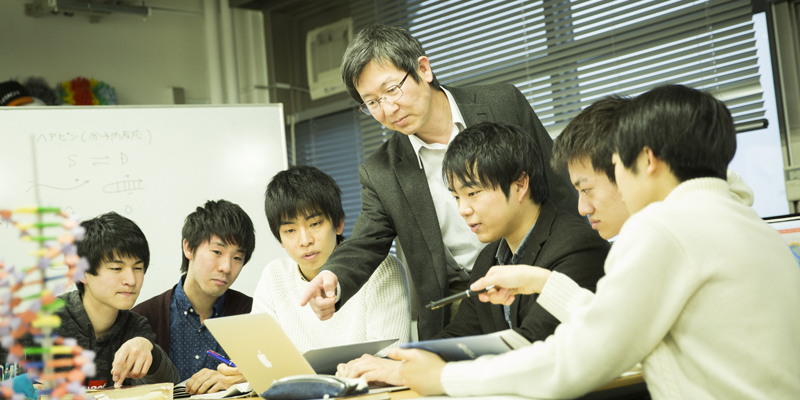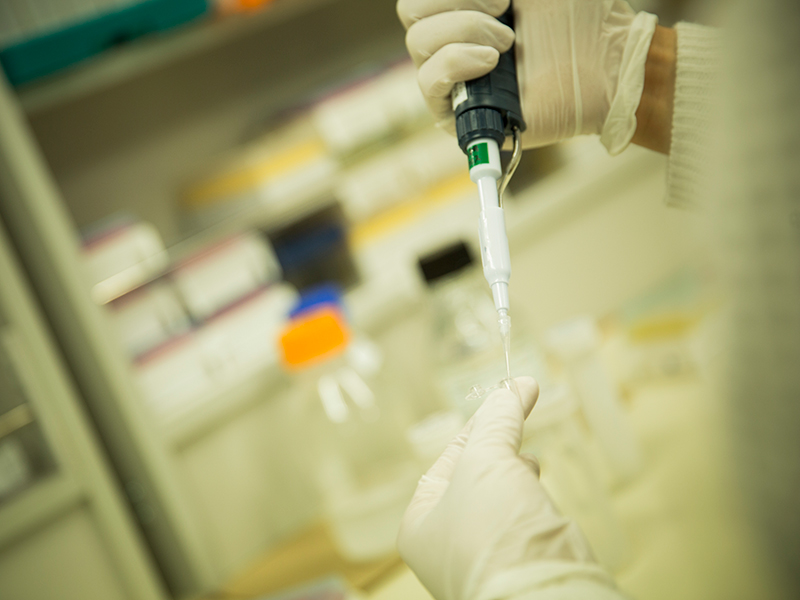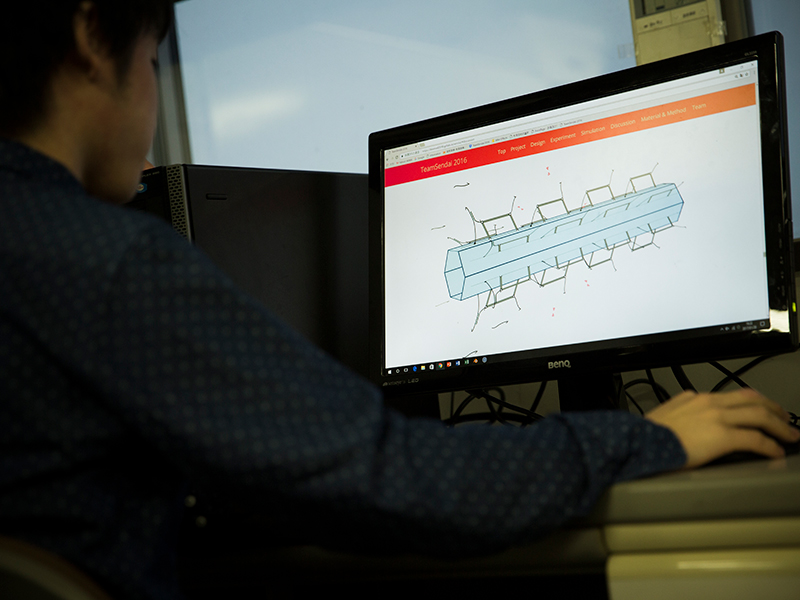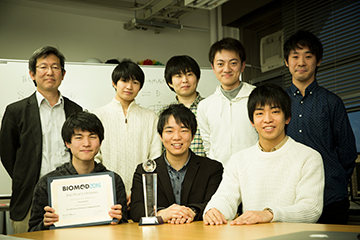
Dr. Satoshi MURATA(Center)
1. From DNA Nanotechnology to Molecular Robotics
Thanks to rapid progress in biology, chemistry and information sciences, we are now able to design biomolecules with desired shape and functionality. Amongst them DNA is known to the most useful material available at this moment. DNA nanotechnology or DNA nanoengineering have been rapidly developing in this decade, providing various possibilities of nanodevices and nanostructures made of synthesized DNA. The field is now expanding to molecular robotics by combining DNA nanostructure, DNA computer and DNA devices into an integrated system (i.e. a molecular robot).

Murata-Kawamata / Nomura laboratory of Tohoku University is the world's first laboratory specializing in molecular robotics. In this laboratory, researches on DNA nanostructures such as DNA tiles and DNA origami, research on molecular computing using DNA, research on artificial cells using artificial lipids are performed. The ultimate goal of this laboratory is to construct molecular robots by systemizing these elements into one consistent system. Until now, they have developed a new type of DNA tile called T-motif and a mechanism to diffuse DNA molecules into gel-like substances to conduct a certain programmed computation. Recently, they have succeeded in integrating molecular sensors, molecular computing, and molecular motors all encapsulated in artificial cells to control the deformation of the artificial cell.
2. Undergraduate Education in Molecular Robotics ~BIOMOD Competition
Designing objects in molecular size is somewhat different from designing ordinary visible size objects like architectural structures. Molecular design requires broad range of knowledge, from chemistry, physics, biology, computer science to mechanical engineering in both design and characterization of the molecule.
To master this kind of intrinsically inter- and multi- disciplinary subject, ordinary education system for sciences and technologies do not work very well. Students may lose their motivation after years of learning process of fundamental knowledge in these subjects. This is the main reason why we need so-called “STEM” education in molecular design. STEM is a way of education based on the idea of educating students in Science, Technology, Engineering and Mathematics in an interdisciplinary and applied approach. Rather than teaching disciplines as separate and discrete subjects, STEM integrates them into a cohesive learning program based on real applications.
BIOMOD (International Biomolecular Design Competition) is a student competition in biomolecular design was founded in 2011 by Wyss Institute of Harvard University. In BIOMOD, no specific goal is determined, participants can develop projects on their own ideas. Whereas, the number of participating team is limited to 30 to keep its friendly atmosphere and time for intensive discussion. No material is provided by congress, however, instructions to use design software for DNA nanostructure are provided. In Japan, molecular robotics research group which is led by Prof. Murata supports students’ activities in BIMOD to promote molecular robotics for younger generations.

Competition of open-ended design such as BIOMOD is beneficial because participants can have experience of the whole research process from the brain storming to get the project idea to the final presentation to show the results, and it eventually provides an effective on-the-job training to develop the qualities and skills to become a scientist and engineer.
Through the activities of BIOMOD, we have noticed there are many advantages to participate to this kind of student competition. Students feel varieties of difficulties, and learn a lot of things through experiencing project. Achievements are not only experimental skills but ways of thinking and perspective to broad possibilities surrounding them. It is nice to see that some of the students seem to start thinking as if he/she were a real scientist.
Student team from Tohoku University has participated since the first competition in 2011. The team of Tohoku University (Team Sendai) always holds the top, such as winning grand prize in 2012 and 2015. The team in 2016 (photo) is a mixed team consisting of undergraduate students from department of mechanical engineering, material science, and medical department. They proposed a novel intra-molecular computing system based on a Domino-liked origami. (Details of the project is found at https://biomod2016.gitlab.io/sendai/)
The educational effects of the competition could be summarized as, 1) Getting self-motivation is the most important influence of the competition. Mind of students have been clearly changed from “waiting for information” style to “thinking by themselves as a researcher” type of attitude. 2) Giving presentation in English in front of peers from over the world provides an opportunity (and certain pressure) to open their eyes to the importance of English communication and the level of global standard. 3) Understanding concrete problems need to be solved and thinking ways to solve them is quite effective to learn many different types of methodologies of biochemistry, simulation on the job. Team work ability is developed through the activities.
It is not only fun but advantageous to grow young researchers in emerging field like molecular robotics.


